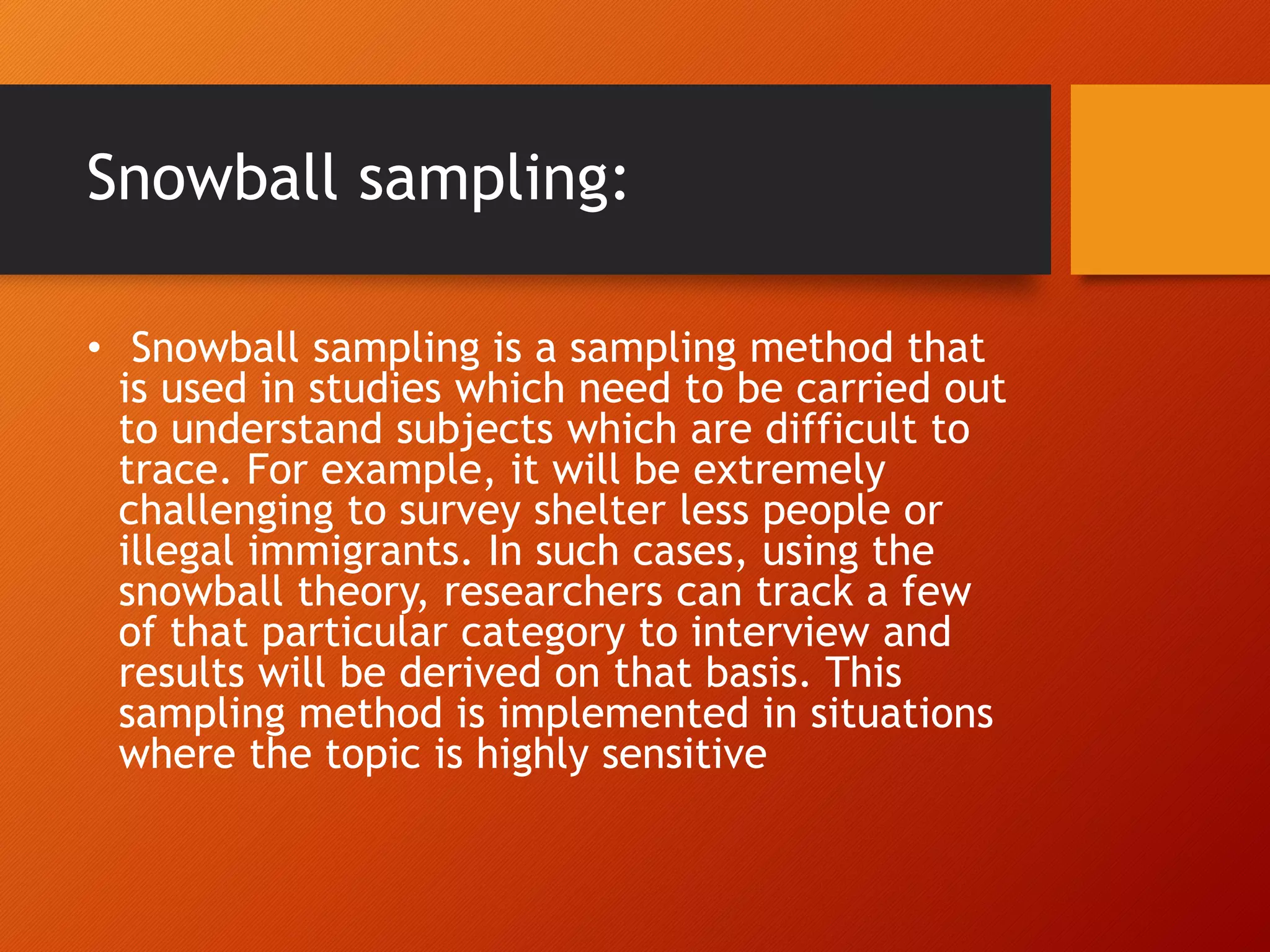The document provides an extensive overview of sampling in research, defining key concepts such as sample, population, sampling frame, and sample size, while detailing the objectives of sampling theory including statistical estimation, hypothesis testing, and statistical inference. It explains various sampling methods, including probability sampling (simple random, systematic, stratified, and cluster sampling) and non-probability sampling (convenience, judgmental, snowball, and quota sampling), highlighting their advantages and disadvantages. The summary underscores the importance of selecting a representative sample to ensure accurate generalizations about the broader population.































